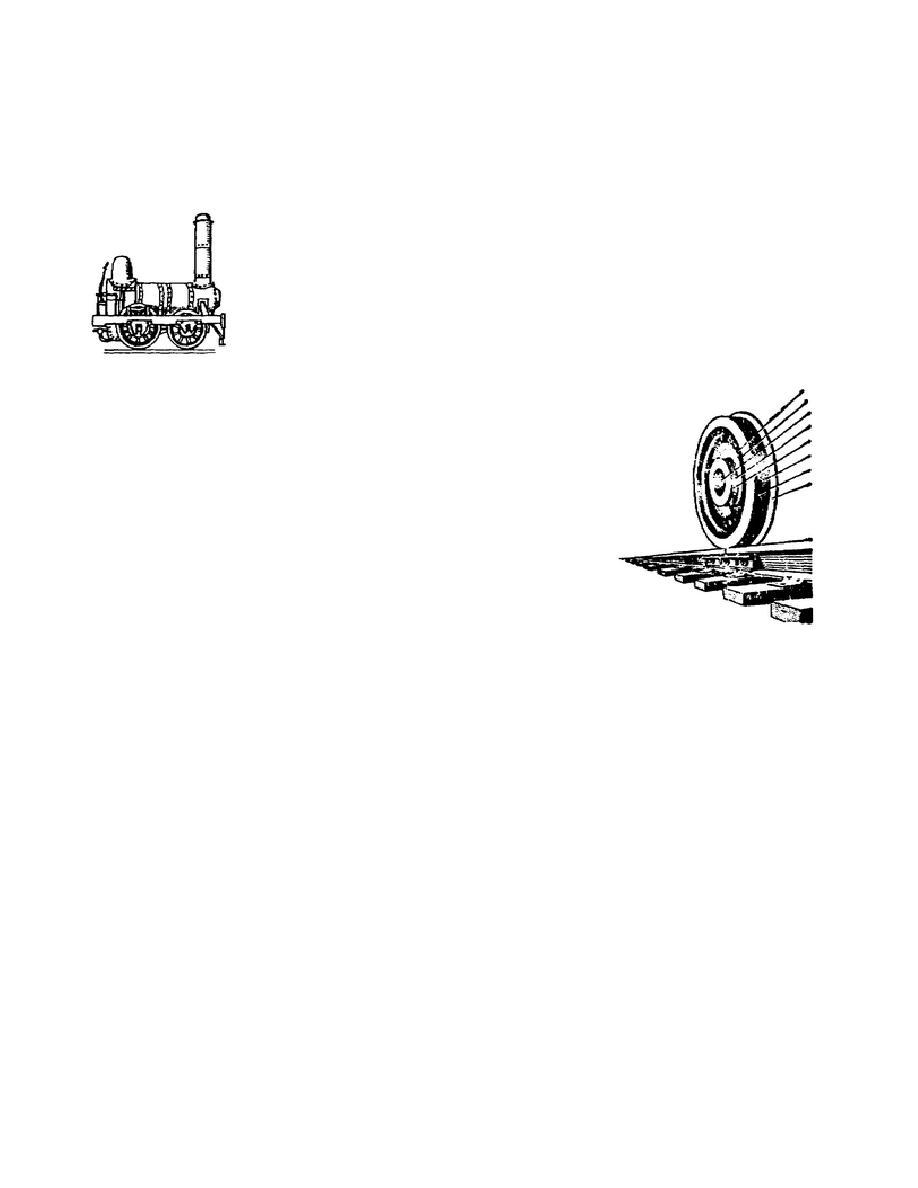
INTRODUCTION
______________
The first railway coach rolled along the tracks of the Stockton and Darlington
Railroad in England in 1825. Ever since, trains have attracted widespread attention not
only as a kind of transportation but also because of qualities that endear them to an
admiring public. The small boy seeing a real train for the first time shares his thrill with
the sedate banker whose hobby is making model rolling stock. This special and often
sentimental interest in trains is understandable; trains are big and powerful, and they're
all going somewhere. They're moving all sorts of people and products to all kinds of
places. With cargo unseen and destination unknown, they provide lay observers with a
choice of the practical or of the romantic and mysterious upon which to speculate. They
excite our curiosity whether we are thinking about a trip, planning a shipment
of goods, or just watching a long line of cars speeding along the rails.
But what of tracks and roadbeds, those essential parts of all rail
systems upon which all train movements depend? Though tracks and
roadbeds have their own interesting history and color and their own
importance, they do not come in for much attention from the general public,
except possibly when new rails are being laid in regions that train service will
benefit. Yet without smooth tracks and sound roadbeds, the finest diesel-
electric locomotive and the handsomest new Vista Dome train would not go
far. Neither would the products that enhance our personal living nor the men
and material our armed forces require, for many of these travel by train.
Keeping rail lines and rights of way in good condition is, therefore, a primary
necessity. It's an impressively big job, too, involving hundreds of millions of
dollars and thousands of workers annually in maintaining and improving trackage in the continental United States.
Additional funds are spent each year both for improving materials and equipment used in track work and for
research to keep rails and roadbeds ready to adapt to the rapidly changing designs and increasing weight and
speed of rolling stock. Advances in track work may be less spectacular than in car and locomotive designs, but to
progressive railroading, civilian or military, they are equally important.
1



 Previous Page
Previous Page
